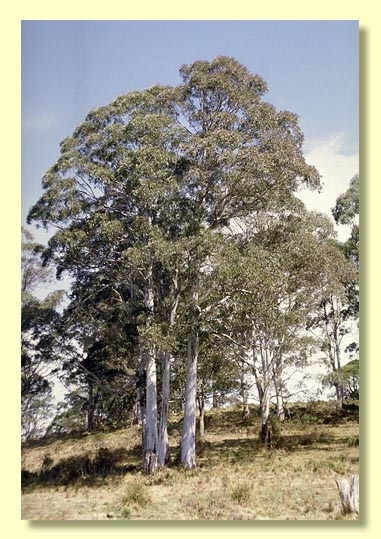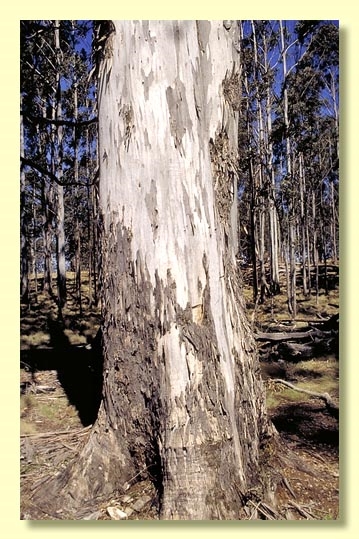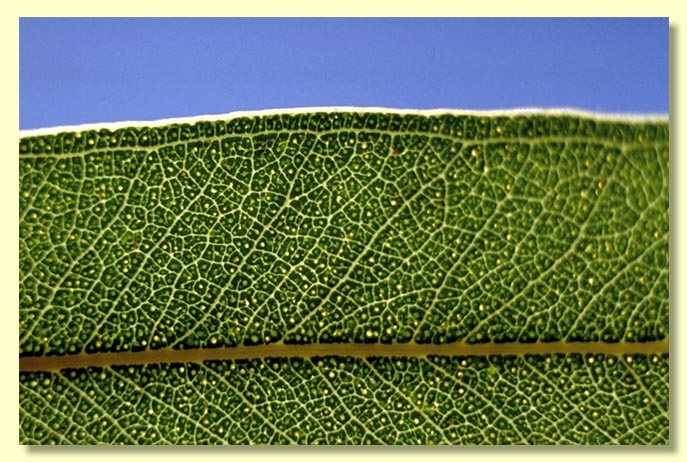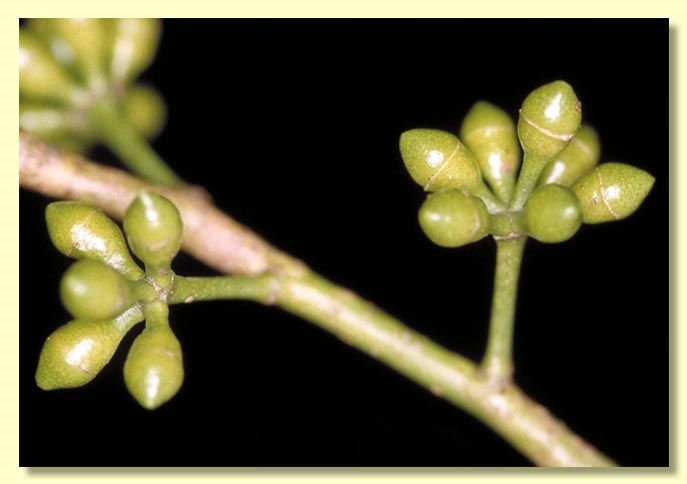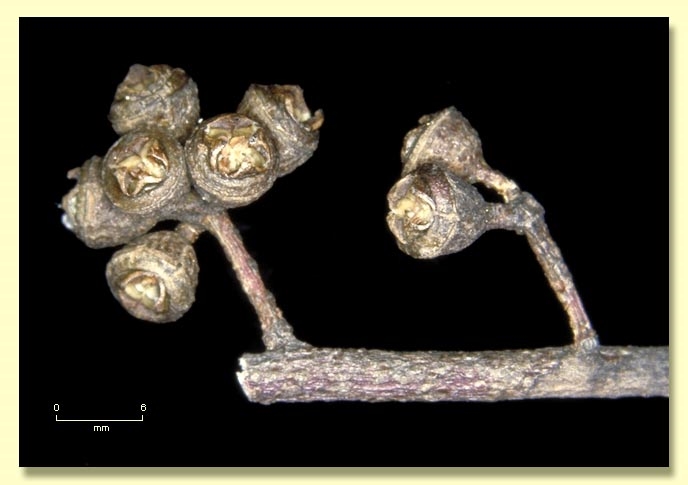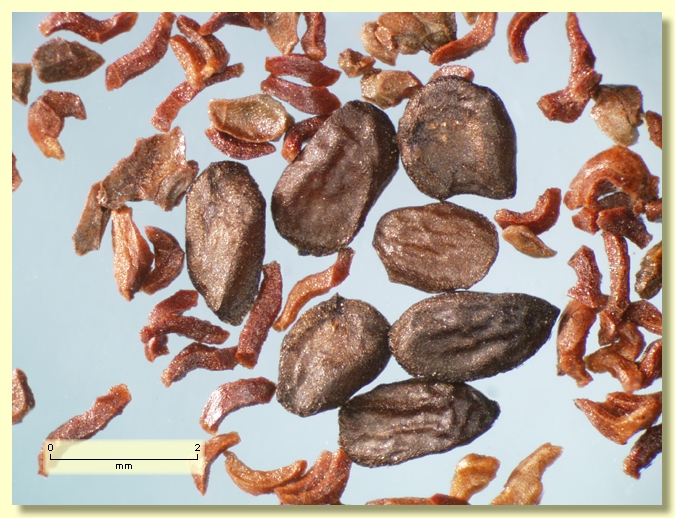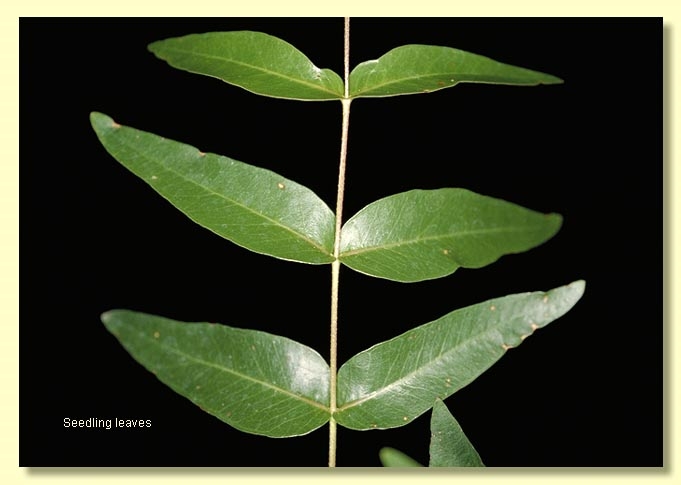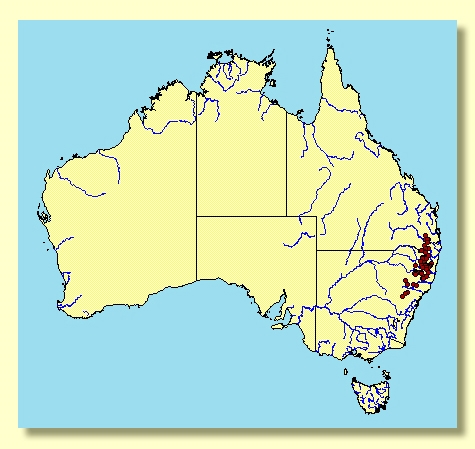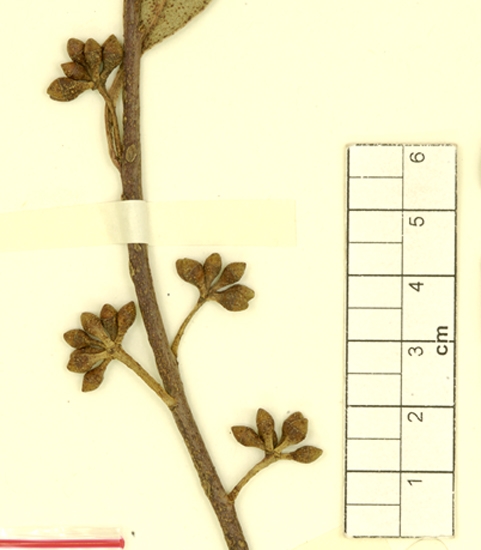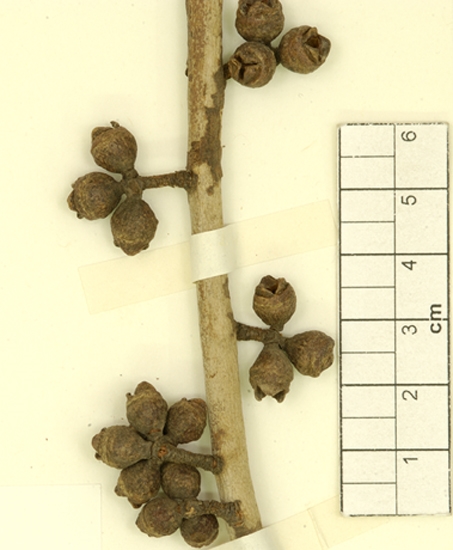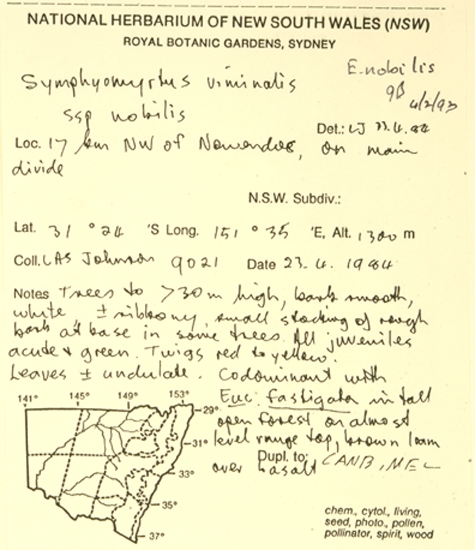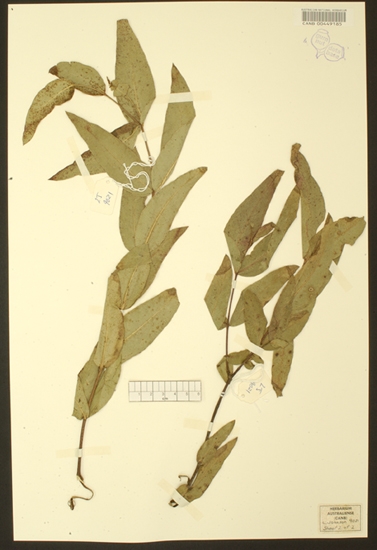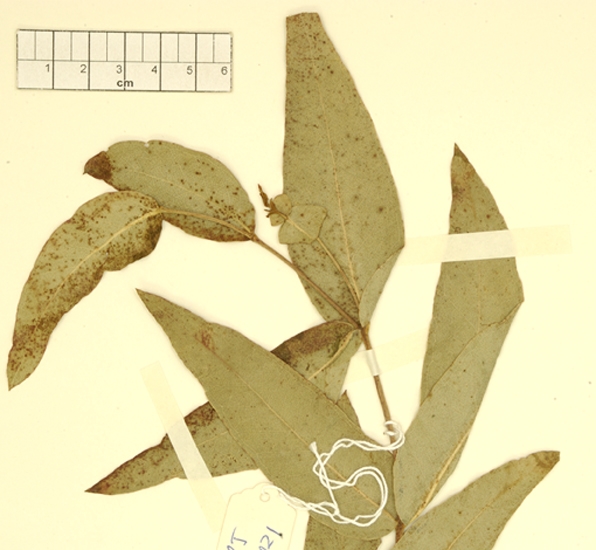Euclid - Online edition
Eucalyptus nobilis
Eucalyptus | Symphyomyrtus | Maidenaria | Euryotae | Viminales | Lanceolatae
T: NSW, Northern Tablelands, 17 km NW of Nowendoc on the main divide, 23 April 1984, L.A.S.Johnson 9021; holo: NSW; iso: BRI, CANB.
Tree to 70 m tall. Forming a lignotuber.
Bark smooth, shedding in long ribbons, white and pale grey; sometimes with persistent slabs of rough grey bark at base of trunk.
Juvenile growth (coppice or field seedlings to 50 cm): stem rounded or square in cross section; juvenile leaves opposite and sessile for many pairs, ovate to lanceolate, 5–15 cm long, 1.4–6.5 cm wide, base rounded or stem clasping, glossy, green.
Adult leaves alternate, petiole 1–2.7 cm long; blade narrowly lanceolate to lanceolate to falcate, 8.5–21 cm long, 1–3 cm wide, flat or undulate, base tapering to petiole, concolorous, glossy, green, side-veins greater than 45° to midrib, moderately to densely reticulate, intramarginal vein parallel to and just within margin, oil glands mostly island or sometimes intersectional also.
Inflorescence axillary unbranched, peduncles 0.6–1.2 cm long, buds 7 per umbel, on pedicels to 0.5 cm long, rarely sessile. Mature buds ovoid to fusiform, 0.4–0.7 cm long, 0.3–0.5 cm wide, scar present, operculum conical to rounded, rarely beaked, stamens irregularly flexed, anthers cuboid to oblong, versatile, dorsifixed, dehiscing by longitudinal slits (non-confluent), style long, stigma blunt, locules 3 or 4, the placentae each with 4 vertical ovule rows. Flowers white.
Fruit on pedicels to 0.4 cm long, rarely sessile, cup-shaped or hemispherical, 0.3–0.6 cm long, 0.4–0.9 cm wide, disc raised-convex, oblique or annular, valves 3 or 4, strongly exserted.
Seeds brown or black, 1–2.5 mm long, ovoid or flattened-ovoid, often pointed at one end, usually lacunose, dorsal surface shallowly pitted or smooth, hilum ventral.
Cultivated seedlings (measured at ca node 10): cotyledons bilobed; stems square in cross-section; leaves sessile, opposite for many nodes, ovate-lanceolate, 5–9 cm long, 1.5–2.5 cm wide, amplexicaul or base rounded, margin entire, apex pointed, discolorous, glossy, green above, paler beneath.
Flowering has been recorded in February, March, May, August and November.
A medium-sized to very tall tree of the Northern Tablelands and its eastern escarpment of New South Wales, e.g. Point Lookout, Yarrowitch and ranges east of Tamworth, extending north into the ranges of the south-eastern Darling Downs of Queensland, e.g. Cunninghams Gap, Pozieres, Tannymorel. It is closest to the widespread ribbon gum, E. viminalis, from which it differs by its northern distribution, buds in sevens (threes in E. viminalis subsp. viminalis) and large, broadly lanceolate, glossy, green juvenile leaves. Other Northern Tableland white gums likely to be confused with E. nobilis are: E. elliptica, which is a much smaller tree with sessile, opposite, round to elliptic bluish green to glaucous juvenile leaves that become alternate in late juvenile phase and buds in sevens; E. dalrympleana subsp. heptantha, with sessile, opposite, bluish, orbicular juvenile leaves and buds in sevens; and the highly restricted E. scoparia with more or less sessile, linear-oblong glossy, green juvenile leaves and buds in sevens.
Eucalyptus nobilis belongs in Eucalyptus subgenus Symphyomyrtus section Maidenaria, a large group of species more or less restricted to south-eastern Australia, characterised by bilobed cotyledons, simple axillary inflorescences, buds with two opercula, stamens with versatile anthers and flattened seeds with a ventral hilum. Within this section, E. nobilis belongs in series Viminales subseries Lanceolatae, having buds in sevens, fruit with an ascending disc and exserted valves, and glossy green, sessile, broadly lanceolate juvenile leaves opposite for many pairs.

